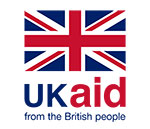On 5 August it was a privilege to take part in the Tech for a Better Planet symposium, which was co-organised by Huawei and IUCN, and supported by the ITU. The online event was held in recognition that there is an urgent need for innovative digital solutions to address the biodiversity crisis in the Asia-Pacific region, as well as new partnerships between the tech industry and conservationists.
During my session, which focused on ‘Green Technology’, I was joined by peers from the ITU, Huawei, the ASEAN Centre for Biodiversity and mobile operator PLDT to discuss how the tech industry can play a part in addressing critical environmental challenges. I was able to weigh in on the following points, based on the experience of our ClimateTech team:
1) Digital technology can help motivate citizens to support climate action
There is a significant gap between what the scientific evidence shows has to be done to prevent the worst impacts of climate change, and the actions that are actually being taken by most citizens. One recognised reason for this ‘action gap’ is a failure to explain the problem of climate change in a way that is meaningful or compelling. Climate change is complex, the scale of the problem is enormous, and in some parts of the world the timeframe of its impacts can feel too distant. If we want to stimulate action, it would help if we focused more attention on telling stories about climate change’s social and human impact.
This is one of many reasons why we love to use human-centred research approaches in the ClimateTech team when exploring topics like Participatory Forest Management. We want our readers – whether they come from a global technology company, a community-based organisation or a government ministry – to understand and empathise with the experiences and perspectives of people who are most impacted by climate change. Digital technology – especially during COVID – has played a pivotal role in enabling us to connect directly with community members, to document their needs and experiences, and to publish reports that are driven by their voices.
Digital technology can also connect people with the information and advice they need to understand how to address climate change or become more resilient to its impacts. For example, over the last year our team has been exploring opportunities for mobile and other types of digital technologies to support plastic collection and recycling. When we spoke to plastic recycling organisations across Sub-Saharan Africa and Asia, we were repeatedly told that the key lever for achieving scale and sustainability was the ability to reach consumers and positively influence their knowledge of, and behaviours towards, recycling. This could be through basic text messages that share information about what kind of materials can be recycled, or smartphone apps that allow customers to book a collection service.
2) Digital technology can help support the management of our natural resources
Last year we published our Digital Dividends in Natural Resource Management report, which showed that digital technology can play a transformative role in enhancing natural resource management (NRM) in three key ways: by supporting community engagement and participation in NRM activities, by enabling organisations to collect and monitor data in near-real-time, and by improving how organisations store, analyse and visualise data. The report includes a lot of interesting case studies that highlight how a wide range of digital technologies are being used in areas like forest management, wildlife conservation, sustainable fishing and ocean conservation. This includes a case study on Huawei’s Rainforest Guardian project, which we found particularly innovative and forward-thinking.
Interestingly, we found that when an initiative receives support from a technology organisation, it is more likely to pair multiple types of technologies, and TWICE as likely to leverage emerging technologies like connected devices, blockchain or artificial intelligence. This underscores the critical role of the private sector, and also shows why initiatives such as Microsoft’s AI for Earth or Huawei’s TECH4ALL programmes, are so important – they help facilitate win-win partnerships with governments and non-profit organisations, often by providing their partners with access to their company’s technical skills, resources and digital expertise. In most cases, NRM organisations said that gaining access to technical skills and expertise would be more valuable to their organisation than project funding.
3) Digital inclusion is a key enabler of building a better planet
At the end of last year, the GSMA estimated that 5.2 billion were subscribed to mobile services. We estimate this figure will grow by another 600 million people by 2025, and 60 per cent of new subscribers will be in Asia Pacific or Sub-Saharan Africa. There is obviously huge potential for mobile and other linked technologies to unlock an array of new opportunities and services.
Forests are a really interesting opportunity for digital innovation – especially because halting and reversing deforestation is known to deliver a cost-effective and nature-based solution to curbing climate change. Many low-and-middle income countries are focusing attention on community-led, or “participatory” approaches to forest management, where local communities participate in monitoring and restoring local forests, and in turn are given sustainable access to forest resources that are critical to their livelihoods.
We have found that local community members are enthusiastic supporters of digital innovation, and want to gain access to digital tools that can help them protect forests and create climate impact. We also believe there is a clear opportunity for mobile services to improve how data from the forest is collected and shared, to reward individuals for their environmental services, and to support the sharing of information and advice. Our team is now participating in a project between Safaricom and 4RDigital in Kenya to support the development of a new digital platform, which could help community members validate their tree planting activities, measure the carbon offset they generate, and then gain access to funding from voluntary carbon credits.
If this, or any of the other work mentioned above interests you and your organisation, please do get in touch. Lastly, a big thanks to Huawei, IUCN and the ITU for inviting us to speak at this event. If you’d like to hear the great contributions made by the session’s other participants, you can watch a recording by following this link.



